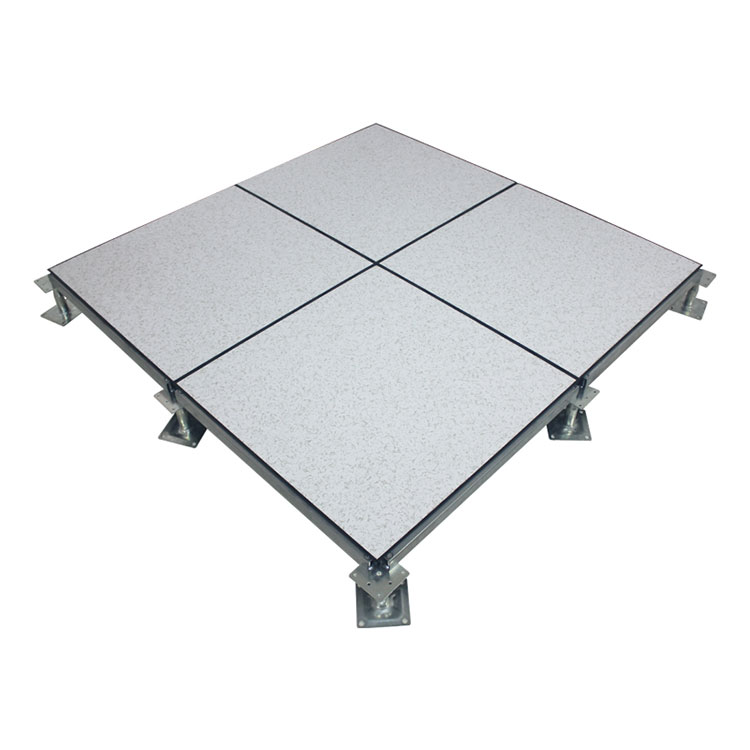Understanding the Importance of Computer Room All-Steel Anti-Static Floors
2025-01-09
In today’s digital era, data centers and computer rooms are the heartbeat of modern businesses, storing and processing massive amounts of information. The efficiency, safety, and longevity of the equipment housed in these rooms depend heavily on the environment in which they are located. One key aspect of this environment is the floor—specifically, the all-steel anti-static floor. In this blog, we will explore the significance of these floors, their design, and why they are critical to the performance and safety of computer rooms and data centers.
What is an All-Steel Anti-Static Floor?
An all-steel anti-static floor is a type of raised flooring system that is specially designed to control static electricity, providing a safe, reliable foundation for sensitive electronic equipment. These floors are primarily used in computer rooms, data centers, and telecommunication spaces where electrical components, including servers and routers, are at risk of damage from electrostatic discharge (ESD).
The floor consists of a grid of steel panels installed on adjustable pedestals, creating a raised space beneath the floor. This space can be used for cabling, cooling ducts, and other infrastructural elements. The steel panels, typically coated with anti-static materials, are grounded to dissipate any electrostatic charge that might build up, preventing ESD-related damage to expensive and sensitive equipment.
Why is Static Electricity a Concern?
Electrostatic discharge (ESD) occurs when two objects with differing electrical charges come into contact, discharging energy in the form of a spark. In computer rooms and data centers, static electricity can build up from human movement, machinery, or even environmental factors like humidity. When ESD occurs near sensitive electronic components, such as CPUs, memory modules, and circuit boards, it can cause malfunctions, data corruption, or even permanent damage to the equipment.
How Do All-Steel Anti-Static Floors Work?
All-steel anti-static floors are specifically designed to address the risk of ESD. Here's how they work:
- Grounding System: The steel panels are connected to a grounding system that channels any static charge away from the floor and into the ground. This helps prevent any buildup of static electricity that could lead to dangerous discharges.
- Anti-static Coating: The steel panels often have an anti-static coating that prevents static electricity from accumulating on the surface of the floor. This coating is typically conductive or dissipative, meaning it either conducts or disperses static electricity in a controlled manner.
- Raised Design: The raised nature of the flooring system ensures that there is an airflow beneath the floor, helping to maintain proper temperature and humidity levels. This also helps prevent the buildup of static charges in the first place.
Advantages of All-Steel Anti-Static Floors
1. Protection for Sensitive Equipment: The primary benefit of anti-static flooring is the protection it offers to sensitive electronic components from ESD. Static electricity can cause significant harm to devices, so controlling it is critical.
2. Durability and Strength: Steel is a robust and durable material that can withstand heavy foot traffic, high loads from equipment, and the wear and tear of daily operations. It also resists damage from chemicals and cleaning agents, making it easy to maintain in a data center environment.
3. Improved Cable Management: The raised floor design allows for easy installation of power cables, data cables, and cooling ducts below the floor. This ensures that cables are organized, which is not only aesthetically pleasing but also minimizes tripping hazards and improves airflow.
4. Easy Access for Maintenance: The raised floor makes it simple to access cables, cooling systems, and other infrastructure elements beneath the floor. This allows for easier maintenance and modification of the room's setup.
5. Enhanced Ventilation: The space between the floor panels allows for effective cooling and ventilation. This is crucial for managing the heat generated by servers and other electronic equipment in computer rooms.
Applications of All-Steel Anti-Static Floors
All-steel anti-static floors are primarily used in environments that house sensitive electronic equipment. Some key applications include:
- Data Centers: These floors are essential in data centers, where large amounts of sensitive data and computing equipment need to be protected from ESD.
- Computer Rooms: Computer rooms in corporate settings, research facilities, and government buildings also benefit from anti-static floors, ensuring that their critical IT infrastructure remains safe.
- Telecommunications Rooms: Any facility that stores telecommunications equipment, such as switches, routers, and transmission devices, requires anti-static flooring to prevent electrical damage.
- Clean Rooms: In clean room environments, such as semiconductor manufacturing facilities, anti-static floors are essential for preventing any contamination of sensitive production processes.
All-steel anti-static floors are a fundamental component of modern computer rooms and data centers, offering protection, durability, and functionality. By preventing electrostatic discharge, improving cable management, and enhancing airflow, these floors ensure that sensitive electronic equipment remains in optimal condition. As the demand for high-performance computing grows, investing in high-quality anti-static flooring systems will remain a key consideration for facilities aiming to provide a safe and efficient environment for their critical IT infrastructure.



